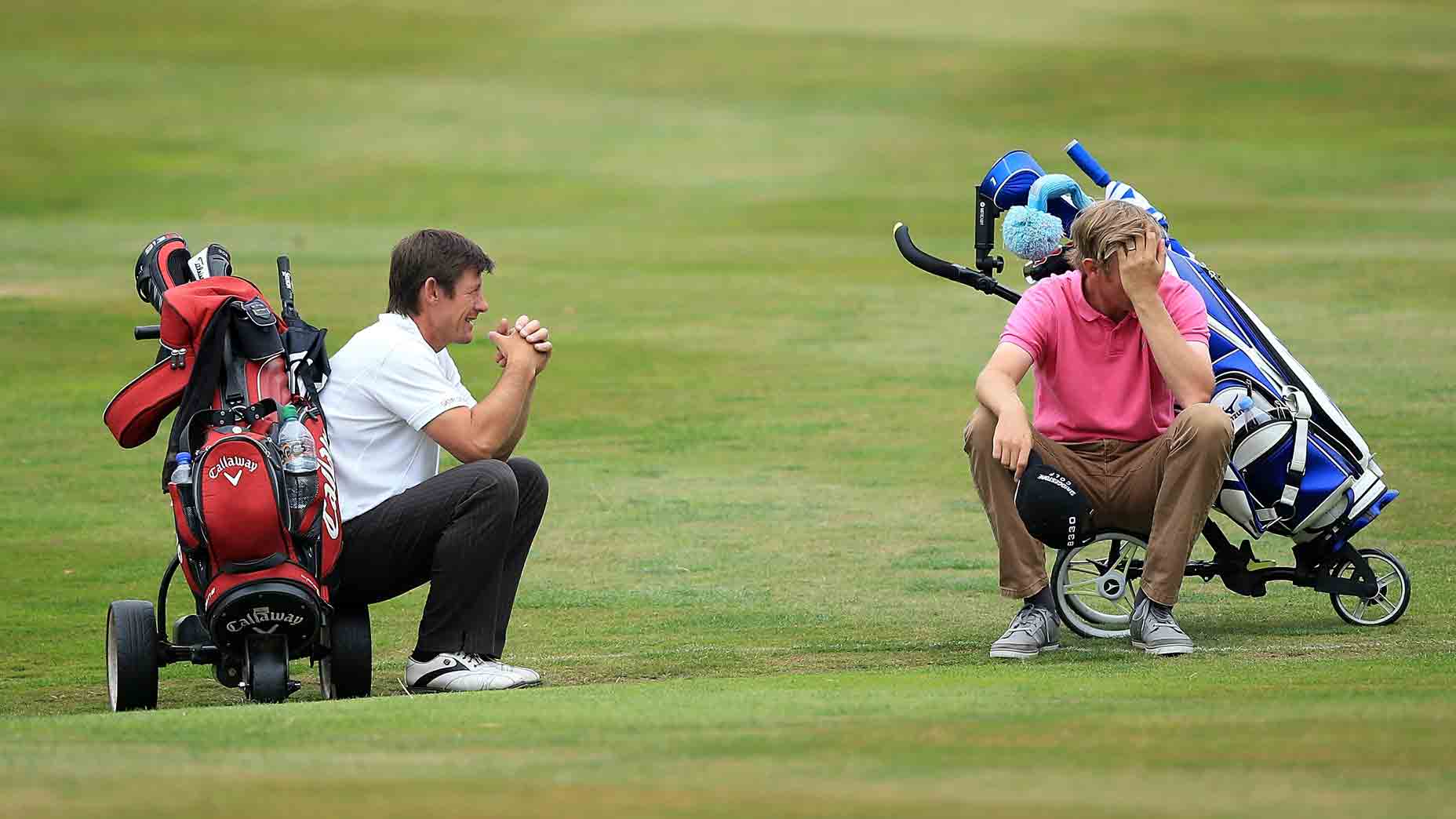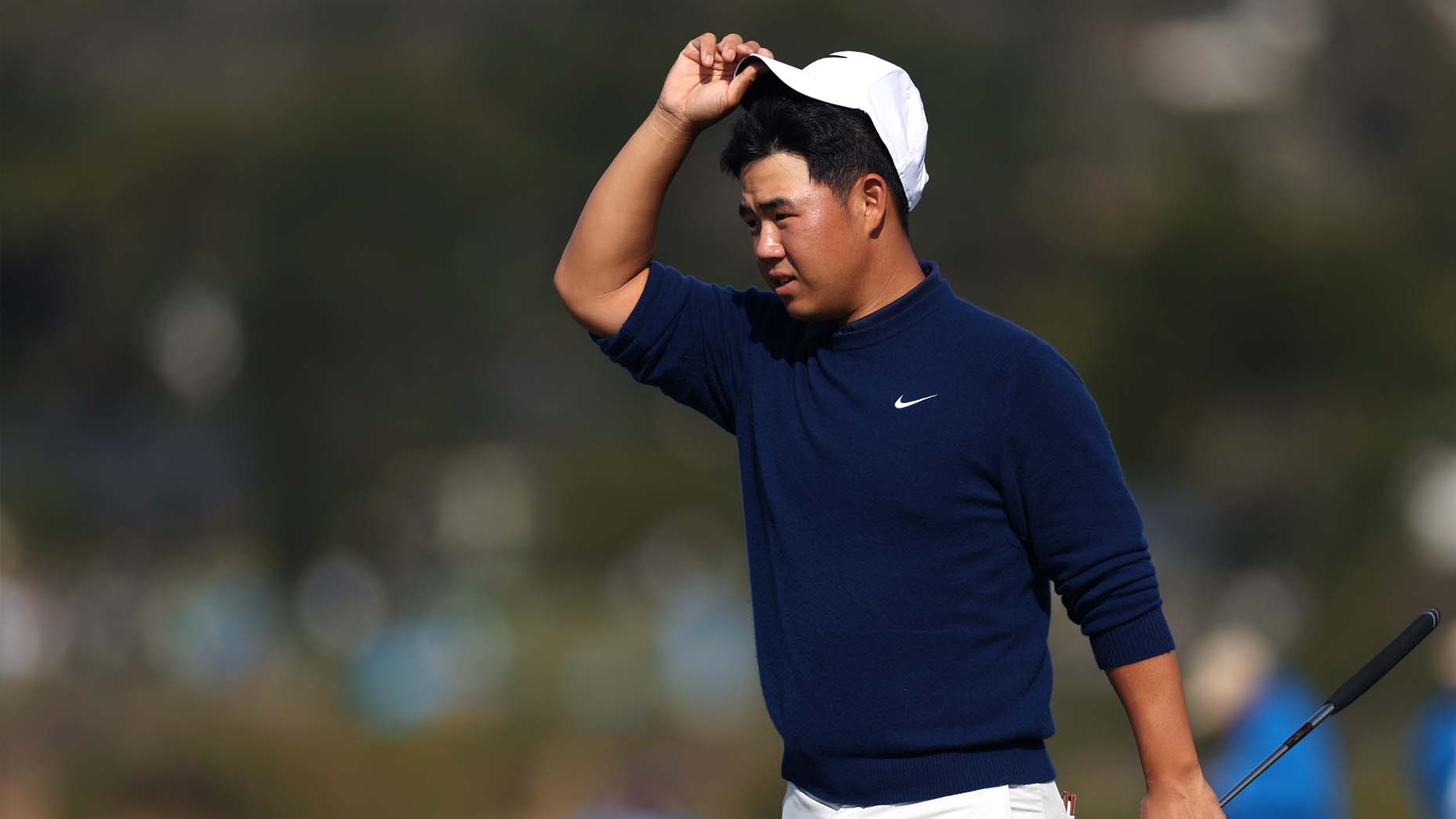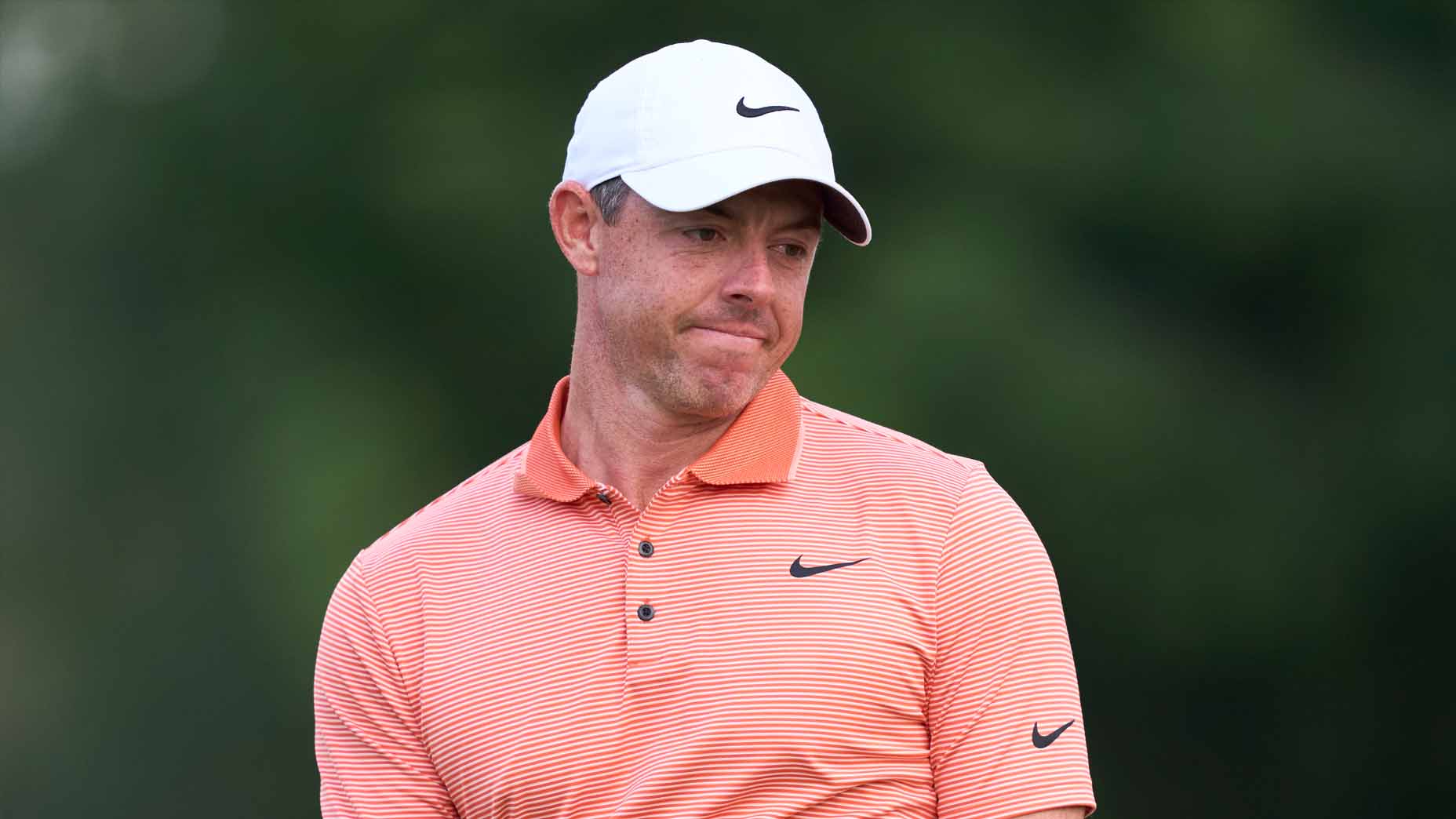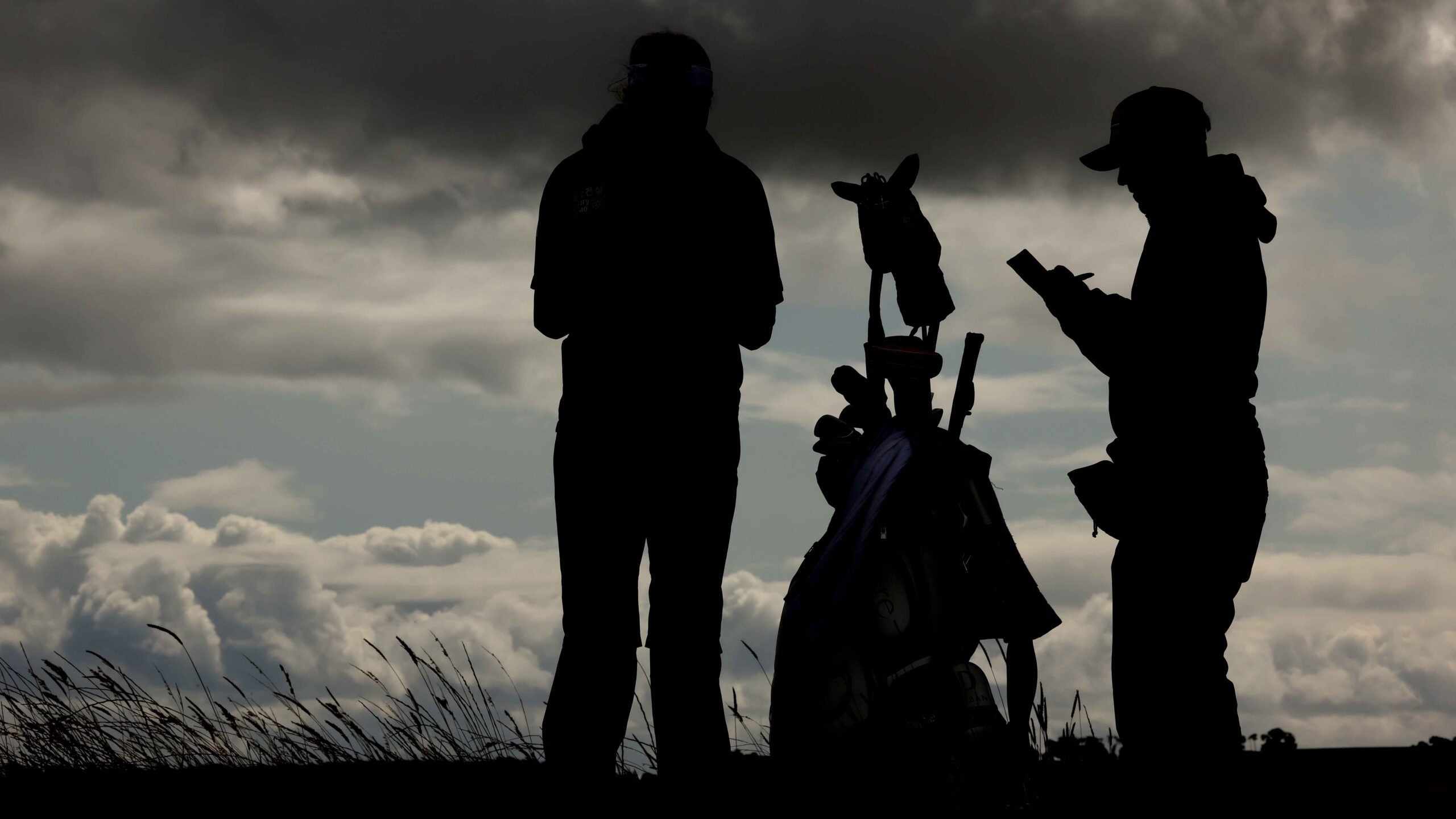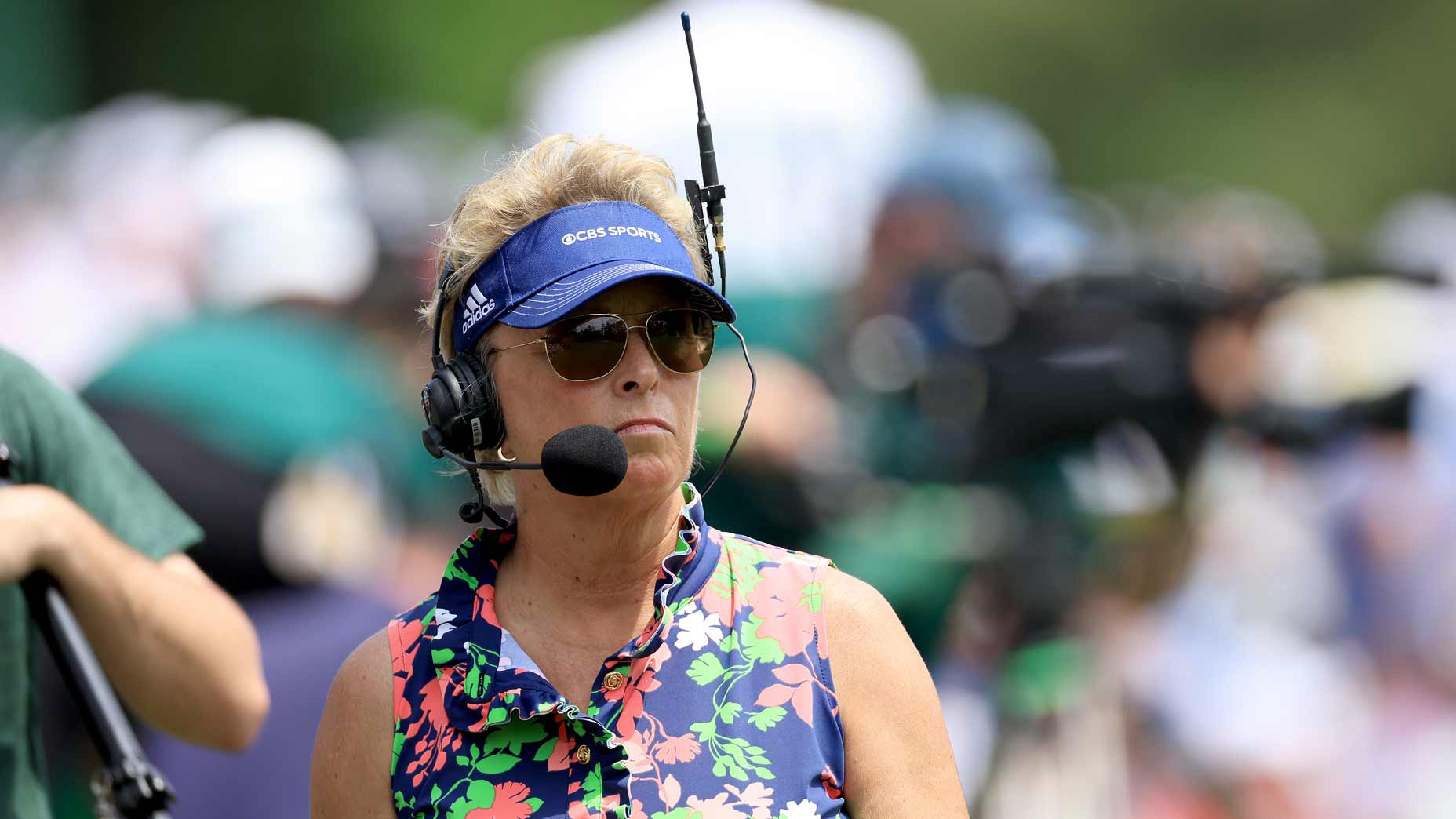Pia Nilsson remembers the text. How couldn’t she? You don’t forget messages from girlfriends of PGA Tour pros, especially ones seeking intervention.
Her man, Nilsson read, was reeling.
Her man was taking 15 practice swings. One. Five.
“True story,” Nilsson said.
To the recent collection then of the sight of Tom Kim perching over his ball for 25 seconds last week, and the pace that forced Dottie Pepper to call for less selfishness two weeks ago, and the viewing of five-and-a-half-hour-plus rounds three weeks ago, Nilsson is adding the story of, we’ll call it, the deliberate pro and the desperate partner. But not to stoke the flames.
To illustrate the extremes she sees.
And to set up that even he found salvation from slow play. Not long afterward, his rehearsals were trimmed back.
How? As much as we may think solving the long-standing issue is by saying simply, ‘Don’t slow play,’ it’s a bit more involved than that. For the pro in Nilsson’s story, he’d sought a feel, and without reaching it, he felt disabled, so he required some discovery. The thought had built over time, too. Where did it come from then? Why wasn’t he told, you know, ‘Don’t slow play’ early on? All are important questions here — and for 30 years, Nilsson, along with Lynn Marriott, has given transparency to them. They’re the co-founders of the Vision54 instruction team, which operates out of Talking Stick Golf Club in Scottsdale, Arizona, along with being a pair of GOLF Top 100 Lifetime Achievement Teachers. They’ve coached pros to hundreds of wins. Nilsson was also once a Solheim Cup captain, and she’s been an Annika Sorenstam confidante since the superstar’s childhood.
We’ll call them slow-play doctors, too. Or maybe the adjective is fast-play. Either way, they have a formula. They have answers.
Like the one they gave to a boyfriend and girlfriend.
Where does slow play come from?
Nilsson had another story. A few years ago, after being hit with a slow-play penalty, a top LPGA pro messaged her and Marriott wondering if they could take a look. She hadn’t felt slow. Her coach, meanwhile, thought her game was OK.
Nilsson and Marriott watched. And?
‘Not worth the wait:’ Tom Kim’s slow play at Pebble Beach jabbed by broadcastBy: Josh Schrock
“And this player likes coaching to be more direct and for us to say exactly what we think,” Nilsson said, “so I remember saying, ‘You’ve actually been very lucky not to get penalized more often because you’re actually not slow, you’re extremely slow.
“And Lynn and I showed her the numbers and she was kind of in shock and we said, you know, you actually shouldn’t tee it up till you’ve cut your preparation in half.”
The question is, how did the pro get tedious? Why does slow play happen?
Coaches, Nilsson said, paired together with technology and such things as even golf-news websites. All are wonderful. All offer something. Put your thumb here. And overlap your index finger there. Don’t do this. But be mindful of that. Head down. Sort of. You know where this is going.
There can be countless items to consider, and processing them can take a while.
“I just think it’s been an evolvement of the game,” Nilsson said, “because, I mean, I used to compete at an elite level where we had no yardages, not even 150-yard bushes. And, you know, we were pretty good at clubbing ourselves anyways. …
“And now we have fantastic technology. But we can have amateurs out there that they see the yardage on the sprinkler head and they look on the cart and they gun it and they check the yardage in five different ways just to make sure it’s exact. When it doesn’t quite matter if it’s within five yards for them. So the technology and measurements are just getting more and more. And then you have more research and study on course management, and everybody wants to consider that. And then you have AimPoint and all of that. So all individually are really advances in accuracy and technology. But then when you put it all together, it’s just a mess for most players.”
Nilsson called it overpacking. Yet, she didn’t fault players for it, at least not completely.
They’ve been coached that way, she said. Perhaps they’ve found some success with it. “They’ve just come from a culture where this has never been brought up or trained whatsoever so how would they know?” Nilsson said.
Thing is, is the player being held back? Or even being hurt?
Does slow play hurt a player?
Rory McIlroy’s slow-play solution? It’s a complicated answerBy: Josh Schrock
Nilsson said yes. She didn’t slow-play her answer.
Nilsson and Marriott believe that the sweet spot ahead of a shot is no more than about 30 seconds, which includes four to nine seconds standing over it. Anything past that you start to get flooded. Anything past that you lose athleticism. Anything past that your percentages of success sink like a ball into water.
“Before the shot is about making sure I know about the wind and the lie and the distance and where to hit it and what club to hit. So it’s a lot more cognitive experience,” Nilsson said. “But then actually making the swing of the stroke is more athletic. You need to actually [here, she made a breath noise], OK, I’m done now. Now get ready to feel the shot or see the line of the path, being in the more sensory experience, so being athletic like any other sport.
“So when I overload with more and more facts and data, It’s really hard for a player to switch over. You can see it a lot, that some people now spend so much time, for example, on the break of a green and they use their system that they like and there’s so much into the sense of the break and where to aim and all of that, and then they get up and they have no ability to sense speed of the putt because speed of the putt is not an intellectual thing, it’s a feel thing. I don’t know how often we call them lineaholics. It’s too much attention. Then there’s no shift, and actually as a putter, I need to have a little access to art and feel and distance. And so it’s just off balance.”
But how do you correct that?
Four words.
What is the Think Box? What is the Play Box?
The Think Box and Play Box are catchy-sounding, though phrased another way, they’re the moments ahead of the shot, and during it. To review here, we’ll go in order.
Think Box
In speed-crazed world, golf is getting slower. Blame self-absorptionBy: Michael Bamberger
The Think Box is the preparation. It’s done away from the ball, and, on a basic shot, it’s about 20 seconds long. You’re gathering facts, then deciding to hit.
But weren’t we just talking about sensory overload? If you’re watching on TV, you may see a lengthy player-caddie exchange, for example. How does a player filter? To help, Nilsson said she’ll stop a player should they go past 30 seconds and not let them hit, with the thought being you learn quickly what you need. Other times, Nilsson will take a player out, and pre-shot items — practice swings, yardage books, etc. — are taken away, and you add only what could assist.
“So I’ve played golf myself for like 60 years,” Nilsson said, “so I feel like my Think Box when it comes to decision-making is almost automatic. I don’t have to think about checking the wind. It’s just habitual. So I need to spend just more time feeling like this inner-calm feeling and just kind of seeing the target and get into state more. But if you have a new golfer, might help them A-B-C — you know, get yardage to the middle of the green and check the lie and check the wind.”
And the final step here?
“Any Think Box has to do with making a decision about the shot,” Nilsson said, “because you never step up to the ball without having made any kind of decision. … Commitment is the big deal, and then I need to know what I’m committing to. So is it committing to a shot and a target? Committing to a feel during the swing? But be extremely clear about that.”
What is the Play Box?
Then you go. The Play Box is stepping into the shot and the swing. Its length is about four to nine seconds.
When anyone — pros or amateurs — goes past that number, Nilsson said the Think Box and Play Box are overlapping — when they shouldn’t be.
‘It’s gotta get better’: CBS analyst scolds pros for growing concernBy: Jack Hirsh
“The Play Box is the time when you make your swing or stroke,” she said. “And how do you best step into that athletic performance state? You’re done thinking. You’re not practicing a technique anymore. You’re a performer who’s going to hit the golf shot to a target. So some like to feel the grip pressures. I like to have a feel in my body with a target connection, whatever it is, but it’s a more sensory state. So the Think Box is more cognitive, gathering facts, but it’s also getting that ‘go’ signal. And Play Box is the executing. Golfers just have messed them together. Most golfers [say,] well, I’m still thinking over the ball, about which club I’m going to hit or the length of my backswing. It’s like, no, no, no, no, no.”
What happens then when, say, a Play Box creeps into the 15-, 20-, 30-second zone?
“Unwanted thoughts creep in,” Nilsson said. “Maybe not on the range, maybe not when you play a relaxing round, but if you play the club championship or if someone is watching you that you want to hit a good shot because they’re watching you, it affects you. There’s just so many more thoughts going on.”
Notably, Nilsson and Marriott also coach a Memory Box, where a player, post-shot, retains good shots by positive reinforcement, and bad shots through being factual and objective. One of the best players at the complete concept is a player Nilsson has known since she was young.
Sorenstam, one of golf’s greatest pros.
“She didn’t distract herself,” Nilsson said, “because she would spend four or five seconds in the Play Box. And she focused a lot on commitment to her shot, because that would lead to outcomes. So she had always — you know, I want to encourage that a very simple way of playing the game on the golf course is commit or not, and if I commit, move on no matter what.”
Guess who was actually a slow player?
And who was once a pro who was penalized for slow play?
Nilsson. Much like the girlfriend story at the top of this article, her recall of the details was clear.
She was in her first final group on the LPGA tour. She was figuring out how to approach a shot over water. She walked off the hole — and an official handed her a two-shot penalty.
“And so ever since then,” she said, “I’ve felt like this is really important.”
